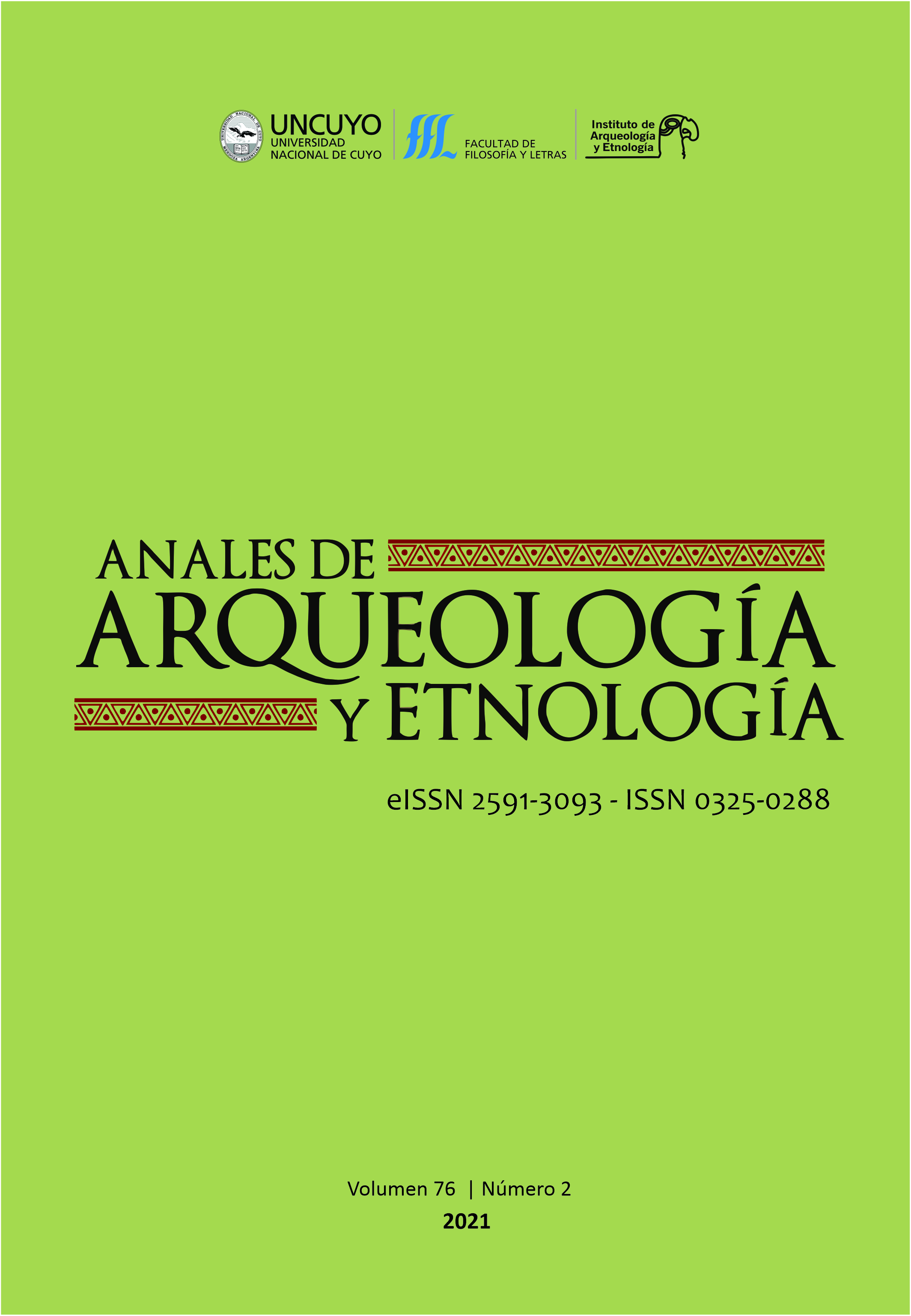Why does the past convoke us as a collective of women?
DOI:
https://doi.org/10.48162/rev.46.006Keywords:
female archaeologist, historiography, production conditions in scienceAbstract
The academic development of archaeology in Argentina has a significant history and has been affected by political, ideological, and public policy ups and downs. The times demand that women re-think gender equity and their working conditions. In the last fifty years of the twentieth century, only a few women archaeologists reached high management positions or trained female students. We need to know what their conditions of production were like in the beginning and asking ourselves how knowledge was transmitted from woman to woman in order to construct not only historiographies and genealogies, but also to understand our own constructions as female scientists and academics. We present the genesis of the meetings of women archaeologists working in northwestern Argentina, tied together by a genealogy of learning that started with three pioneers in the 1960s: Ana María Lorandi, Myriam N. Tarragó, and Marta Ottonello, in order to record this history as a chronological, analytical, and evaluative account, resulting from the sum of a series of narratives of the experiences of the protagonists.
Downloads
References
Alberti, B. y V. I. Williams. 2005. Introducción. En Williams, V. y B. Alberti (eds.) Género y Etnicidad en la arqueología sudamericana: 7-19. Serie Técnica Nro 4. INCUAPA. UNICEN. Olavarría.
Bellelli, C., M. Berón y V. Scheinsohn. 1993. Una arqueología de distinto género. Publicar 2 (3):47-61.
Bregante, O. 1926. Ensayo de clasificación de la cerámica del Noroeste argentino. Estrada. Buenos Aires.
Chaparro, G., C. Bellelli, V. Scheinsohn y M. Berón. 2019. Género en la arqueología argentina. Trayectorias, prácticas y saberes: Conversatorio 2019. Revista Práctica Arqueológica 2 (1): 42-46.
Conkey, M. 2005. Dwelling at the margins, action at the intersection? Feminist and indigenous archaeologies. Archaeologies. Journal of the World Archaeological Congress 1 (1): 9-59.
Conkey, M. W. y J. D. Spector. 1984. Archaeology and the study of gender. Advances in Archaeological Method and Theory 7: 1-38.
Dillenius, J. 1913 [1911]. Craneometría comparativa de La Isla y el Pukara de Tilcara (Provincia de Jujuy). Tesis para el doctorado en Filosofía y Letras, Universidad de Buenos Aires. Coni Hermanos (ed.).
Duran, M. A. 2008. La ciudad compartida. Conocimiento, afecto y uso. Ediciones SUR. Santiago de Chile.
Gero, J. 1994. Excavation bias and the women at home ideology. En Nelson, M., S. Nelson y A. Wylie (eds.) Equity issues for women in archaeology: 37-42. Washington. American Anthropological Association AP3A.
Gero, J. 1996. Archaeological practice and gendered encounters with field data. En Wright, R. (ed.) Gender and Archaeology: 251-280. University of Pennsylvania Press. Philadelphia.
Korstanje, A. 2005. Comment on “Dwelling at the margins, action at the intersection? Feminist and indigenous archaeologies, 2005”. Archaeologies. Journal of the World Archaeological Congress 1 (1): 71-74.
Korstanje, M. A. Julio 2019. El pasado nos convocó (y tres generaciones de "arqueólogas formadas por mujeres en el NOA” nos reunimos a hablar de nosotras). Ponencia presentada en Género en Arqueología Argentina: trayectorias, prácticas y saberes. Conversatorio del XX Congreso Nacional de Arqueología Argentina: 50 años de arqueologías. Universidad Nacional de Córdoba.
Korstanje, M. A y S. Archila. 2020. Women in South American Archaeology. En Aldenderfer, M., M. Sepulveda y E. Neves (eds.) Handbook of South American Archaeology. Oxford University Press. En prensa.
Lazzari, M. 2003. Archaeological visions. Gender, landscape and optic knowledge. Journal of Social Archaeology 3 (2): 194-222.
Navarrete, R. 2010. Excavando mujeres en y desde el sur: Aproximaciones a la arqueología feminista en Latinoamérica. Revista Venezolana de Estudios de la Mujer 15 (34).
Politis, G. 2001. On archaeological praxis, gender bias and indigenous peoples in South America. Journal of Social Archaeology 1(1): 90-107.
Ramundo, P. 2017. Mujeres y arqueología. El aporte de Juliane Dillenius a la historia disciplinar, a través del análisis documental en el Instituto Ibero-Americano de Berlín. Actas de las III Jornadas de Investigación y reflexión sobre historia, mujeres y archivos: 151-158. Unicen. Tandil.
Ramundo, P. 2019. La ciencia en manos femeninas: biografía de Juliane Dillenius, la primera antropóloga física americana. Bérose Encyclopédie internationale des histoires de l'anthropologie, Paris. Disponible en: https://www.berose.fr/article1741.html?lang=fr
Scattolin, C. 2003. Representaciones sexuadas y jerarquías sociales en el Noroeste argentino prehispánico. Acta Americana 11(1): 30-48.
Scattolin, C. 2006 a. La mujer que carga el cántaro. En Williams, V. y B. Alberti (eds.) Género y etnicidad en la arqueología de Sudamérica: 43-72. Ediciones Incuapa. Olavarría.
Scattolin, C. 2006 b. Contornos y confines del universo iconográfico Precalchaquí del valle de Santa María. Estudios Atacameños. Arqueología y Antropología Surandinas 32: 119-139. http://dx.doi.org/10.4067/S0718-104320060 00200009.
Williams, V. y B. Alberti (eds.). 2005. Género y etnicidad en la arqueología sudamericana. Serie Teórica 4. INCUAPA, UNICEN. Olavarría.
Wylie, A. 2001. Doing social science as a feminist: The engendering of Archaeology. En Creager, A., E. Lunbeck y L. Schiebinger (eds.) Feminism in twentieth century science, technology, and medicine: 23-45. Chicago UP.
Downloads
Published
How to Cite
Issue
Section
License
Copyright (c) 2021 Anales de Arqueología y Etnología

This work is licensed under a Creative Commons Attribution-NonCommercial-ShareAlike 4.0 International License.
Esta obra está bajo licencia internacional Creative Commons Reconocimiento-NoComercial-CompartirIgual 4.0.
Quienes publiquen en Anales de Arqueología y Etnología aceptan las siguientes condiciones:
- Los/as autores/as conservan los derechos de autor y ceden a la revista el derecho de la primera publicación, el cual está sujeto a la licencia Creative Commons, que permite a terceros utilizar lo publicado siempre que mencionen la autoría del trabajo y a la primera publicación en esta revista.
- Los/as autores/as podrán realizar otros acuerdos contractuales no exclusivos para la distribución de la versión del artículo publicado (p. ej., incluirlo en un repositorio institucional o publicarlo en un libro o monografía) siempre que se indique expresamente que el trabajo se publicó por primera vez en esta revista.
Los artículos firmados son de responsabilidad exclusiva de sus autores.
Anales de Arqueología y Etnología garantiza el libre acceso y la gratuidad para autores/as y lectores/as.
















